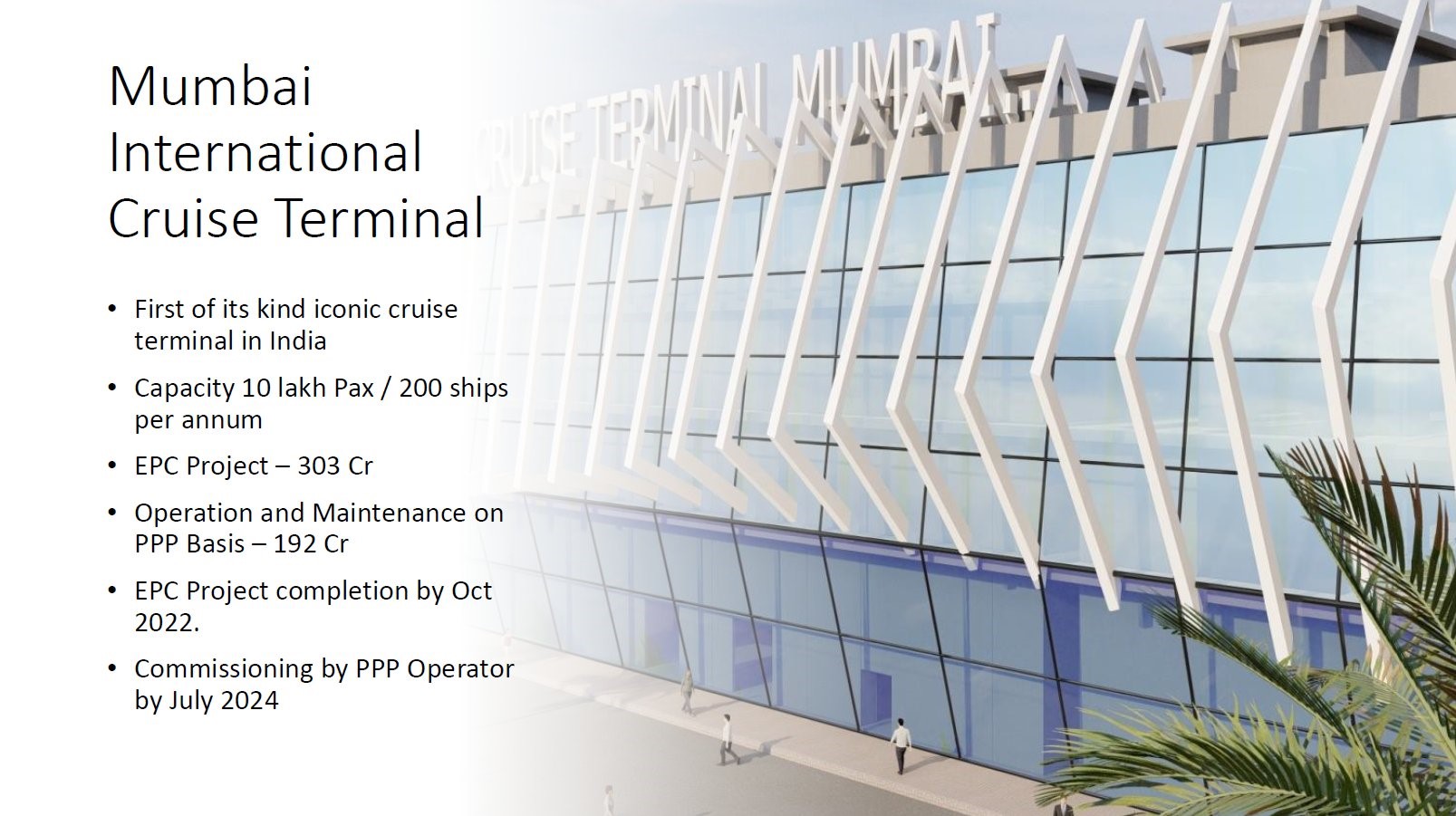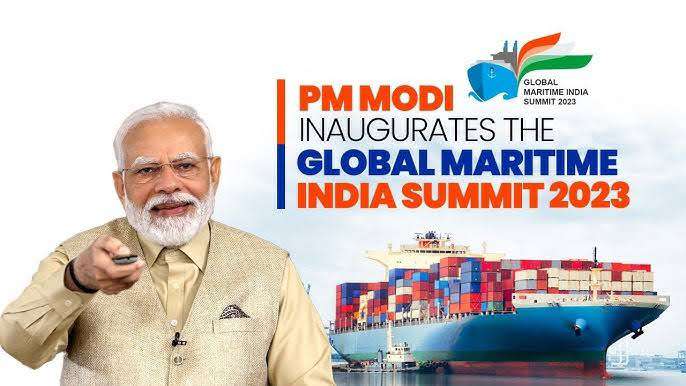Mumbai Port’s Cruise Terminal Modernisation: A Case of Delays, Corruption Allegations, and Missed Opportunities
Mumbai’s International Cruise Terminal (MICT) at Indira Dock was envisioned as a flagship project that would bolster India’s growing cruise tourism industry. Expected to attract millions of tourists and position Mumbai as a major player in the global cruise circuit, the project has been plagued by repeated delays and escalating costs. What was meant to be completed in two years that is by September 2019 now faces a new completion target of October 2024 that is Seven Years. While logistical and operational challenges are often cited, many insiders believe there’s more beneath the surface—pointing to corruption and mismanagement as underlying causes of the persistent setbacks. As Sushil Kumar Singh, Chairperson, Deendayal Port Authority has assumed the additional charge to the post of Chairperson, Mumbai Port Authority on 1 October 2024. It is now expected that he might look into the delayed project personally.
Key Features of MICT:
- Massive Capacity & Advanced Infrastructure:
- Total Construction Area: Spread over 4.15 lakh sq. ft., the terminal is designed to cater to large cruise ships and a high volume of passengers.
- Elevators and Escalators: MICT will have 22 elevators and 10 escalators, ensuring seamless passenger movement across the terminal.
- Car Parking: The terminal will include a multi-storied parking facility for up to 300 cars, catering to passengers arriving via road.
- Berthing Capacity: Capable of handling two cruise ships simultaneously, the terminal is expected to process 200 ships annually.
- Passenger Capacity: With the infrastructure in place, MICT will have an impressive annual capacity of 10 lakh passengers, positioning it as one of the busiest cruise terminals in India.
- Recreation and Retail:
- Along with handling cruise operations, the terminal will provide various recreation, leisure, and retail facilities, making it an attractive spot for tourists and locals alike. This includes entertainment areas and shopping spaces, enhancing the overall experience for passengers.
Why the Modernisation of MICT is Crucial:
- Boost to Tourism: By upgrading the terminal, Mumbai can attract larger international cruise liners, turning the city into a prominent global cruise destination. The influx of tourists would have a ripple effect, benefitting the hospitality, retail, and transport sectors.
- Economic Benefits: Increased tourism would generate significant revenue for local businesses, including hotels, restaurants, and shops, leading to greater economic stability for local stakeholders.
- Job Creation: The project would create direct employment opportunities in the construction, port operations, and tourism industries, benefiting the local population significantly.
- Global Competitiveness: Modernising MICT would help India compete with other global cruise ports, aligning its infrastructure with international standards.
The Ongoing Delays: What’s Causing the Hold-Up?
Despite its significance, the project has been plagued by delays. Here’s a timeline of key events:
- September 2017: M/s Belhekar and Kale Associates were awarded the contract, with an initial budget of Rs. 138 crores. The expected completion date was September 2019.
- M/S Belhekar And Kale Associates Jv is registered as a Partnership firm in Maharashtra having its registered office in Shivajinagar, Pune.
- M/s Belhekar and Kale Associates had quoted Rs.130,60,83,971.96
- August 2020: Work was still in progress, with extensions granted until March 2020 and under consideration for December 2021.
- June 2022: Another extension, pushing the deadline to December 2022, with further consideration for June 2023.
- September 2024: Facade work remains ongoing, with the deadline now extended until October 2024.
Cost:
- Project Cost: The total estimated cost of the project stands at Rs 495 crore,
- With Mumbai Port Authority (MbPA) incurring Rs 303 crore for the bare infrastructure. The costs now ballooning more than double the initial estimate, stakeholders are left wondering where exactly the additional funds have been allocated. While construction delays can be attributed to technical reasons, insiders suggest a more troubling explanation—corruption within the project’s ranks.
- Private Sector Investment: The remaining Rs 192 crore was to be invested by the private operator responsible for interior developments, which include the installation of elevators, escalators, and the multi-storied car parking facility.
Lack of Transparency and Accountability:
One of the major criticisms of the MICT modernisation has been the lack of transparency surrounding the delays. While reasons like “work in progress” have been cited, no detailed explanations have been provided, leaving many stakeholders in the dark about why the project remains incomplete. There have been no concrete updates on the exact challenges, adding to suspicions of administrative inefficiencies or even potential corruption.
Corruption Allegations: A Major Roadblock
Reports from industry insiders and concerned stakeholders suggest that the Mumbai Port Trust (MbPT) has failed to address clear signs of mismanagement and potential corruption. The cost overruns—coupled with repeated deadline extensions—raise questions about whether funds are being misappropriated or wasted through inefficient project management.
Blind Eyes from Government Departments: Despite multiple signs of inefficiencies and corruption, various government bodies, including the Ministry of Ports, Shipping, and Waterways, have remained silent on the matter. With the project now entering its seventh year, many believe that key government officials are turning a blind eye to the real issues plaguing the project, likely influenced by vested interests.
The Real Challenges: Who’s to Blame?
The project faces several tangible challenges, from supply chain issues to technical difficulties. However, what’s more concerning is the systemic failure across various levels of governance:
- Mumbai Port Trust: As the primary project overseer, MbPT and its appointed officer P.K.Sinha, Deputy Chief Engineer – CD II should be held accountable for its repeated failure to meet deadlines. The lack of transparency in fund allocation, as well as in selecting contractors, has only furthered suspicions of corruption.
- Government Oversight: The Ministry of Ports, Shipping, and Waterways has done little to hold project stakeholders accountable for the delays and cost overruns. The fact that the project has been allowed to drag on without any formal inquiry into the escalating costs indicates a serious lapse in governance.
- Contractors and Approvals: One major obstacle has been the requirement that contractors’ work be approved by Officers. While this step is critical for safety, the slow approval process has further delayed the project. Additionally, the schedule of payments places a heavy burden on contractors, with complex payment milestones based on approvals and installation phases.
Missed Opportunities and the Future
Despite the setbacks, the project still holds immense potential for boosting India’s cruise tourism industry. Once completed, the modernised Mumbai International Cruise Terminal could generate significant economic benefits, provide jobs, and help position India as a global player in maritime tourism. However, if the current trajectory of delays and mismanagement continues, the project may become another example of India’s inability to capitalise on its infrastructural ambitions.
The project’s future now hinges on a renewed commitment to transparency, accountability, and efficient governance. Without these, the MICT modernisation could become a lost opportunity, weighed down by inefficiencies and allegations of corruption.
The Future: What’s at Stake?
Despite the delays, the modernisation of MICT still holds tremendous potential:
- Cruise Hub Potential: Once completed, MICT will have the capacity to handle larger cruise ships, positioning Mumbai as a major hub for South Asian cruise tourism.
- Boost to the Indian Economy: Increased tourist inflows could lead to higher foreign exchange earnings, benefiting local businesses and the broader Indian economy.
The modernisation of the Mumbai International Cruise Terminal is an important initiative that could reshape India’s maritime landscape. However, the repeated delays and escalating costs have raised red flags about corruption, mismanagement, and a lack of accountability. Unless government agencies, contractors, and other stakeholders take immediate corrective action, this critical infrastructure project may fail to meet its potential—leaving India lagging behind in the competitive global cruise tourism industry.





One thought on “Mumbai Port’s Cruise Terminal delayed by Five Years”